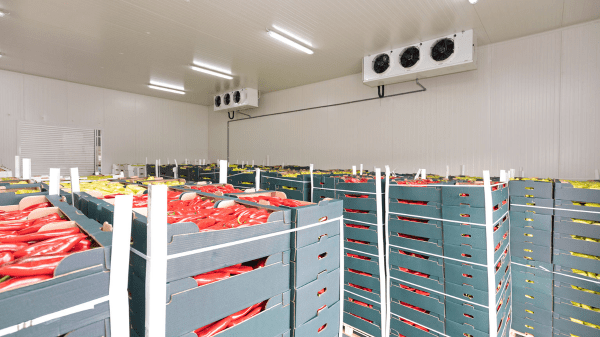Most people in the produce industry are familiar with the cold chain—the flawed but magnificent system that takes fresh fruits and vegetables from the field to the supermarket in a form that somebody will pay for.
A recent article in The New Yorker gives us a picture of the cold chain from a Third World perspective—specifically, Rwanda, in southern Africa.

The article quoted Toby Peters, an economist at the UK’s University of Birmingham who is the world’s first professor of cold technology: “There is no cold chain in Rwanda. It just doesn’t exist.”
In 2018, Rwanda announced a National Cooling Strategy—the first nation in sub-Saharan Africa to do so. In 2020, it launched a program call the Africa Centre for Excellence for Sustainable Cooling and Cold Chains (ACES), a cooperative effort between the Rwandan and British governments and the United Nations Environment Programme.
The strategy has a long way to go. A standard practice in the cold chain is to take produce, once harvested, and have its field heat removed, for example by a forced-air chiller. There is only one of these in the entire nation.
The article described a solar-powered cold-storage room in which freshly picked peppers and beans are held before being flown to Britain the next day. The room’s temperature, at 65 degrees Fahrenheit, was 20 degrees warmer than it should have been.
Then there was a pair of cold storage rooms, built in 2019 with funding from the European Union (EU). The article describes the facility: cobwebs lining the walls, a “spotlessly clean” floor that “did not suggest frequent use.” The floor was built of wood, a poor material to use because it is difficult to sanitize.
The facility housed “two lonely crates of chili peppers,” and cooling “switched on purely in honor” of the visiting UN delegation.
Why wasn’t the facility operative? One farmer explained that the refrigerating unit was simply too expensive for them to run.
Kenya’s produce industry is on the march. Exports of fruits, vegetables, and cut flowers are now the largest source of income for the Kenyan government.
Some operations are able to meet stringent international quality standards. Three quarters of Kenya’s fruit and vegetable exports come from seven large, mostly white-owned farms, which have the resources to meet those standards and are “easy to work with and audit.”
At the same time, the small farmers who grow more than 90 percent of the nation’s fruits and vegetables and who do not have access to such facilities are doomed to losing about a third of their crop to spoilage.
It is not easy to draw sweeping conclusions from this article. Foreign aid? We’ve just seen what happened with the EU-funded cold storage facility.
Bizarrely, another chilling plant, funded by the Bill and Melinda Gates Foundation for the dairy industry, apparently diminished the quality of local children’s diets. Why? Because their parents could now store milk overnight to sell instead of giving it to their children to drink.
In writing this article, it is not my intention to indulge in tongue clicking or moralizing. After all, far more knowledgeable people than me have tried but failed to come up with adequate solutions. But I think it is a good idea to see the international produce industry in the widest possible light.



